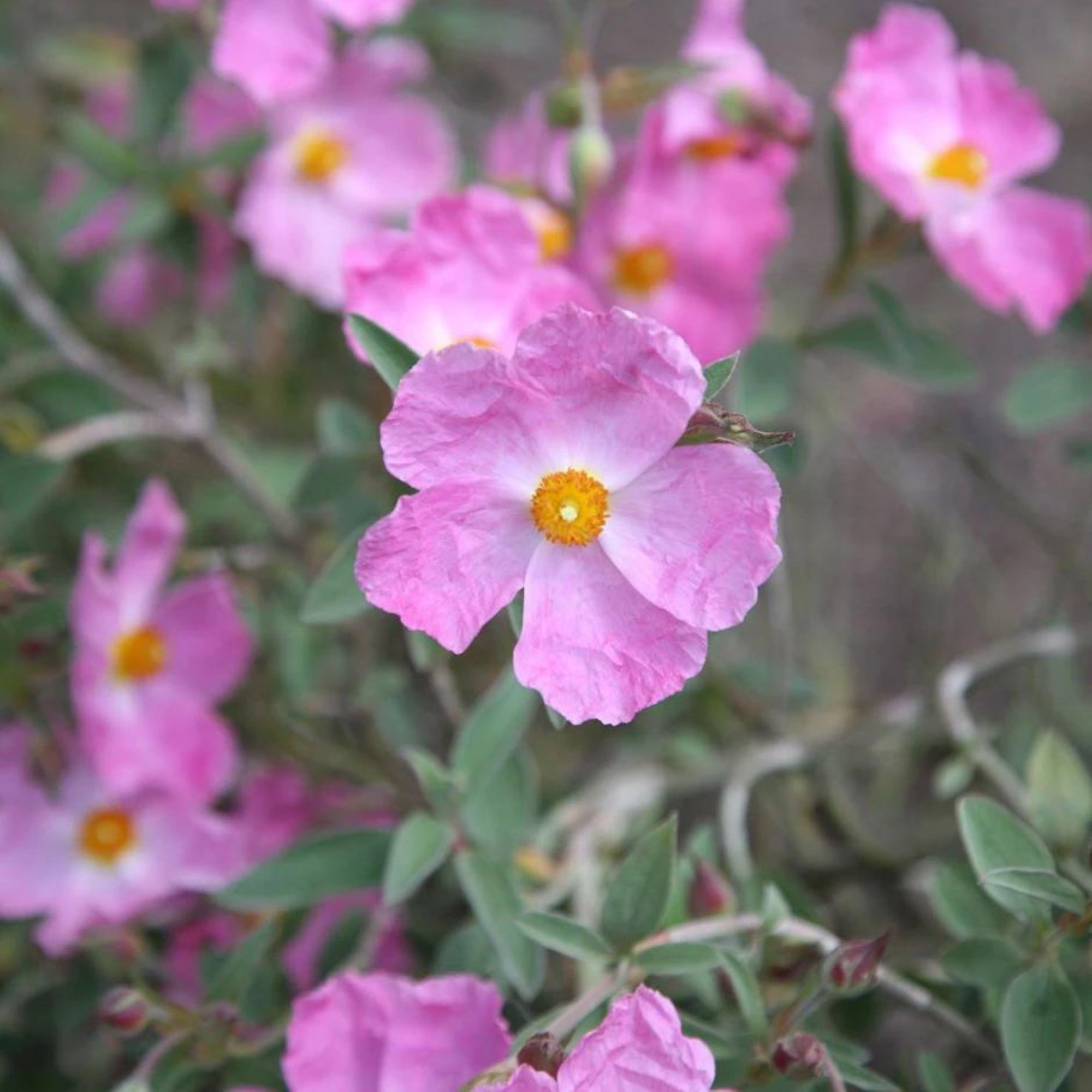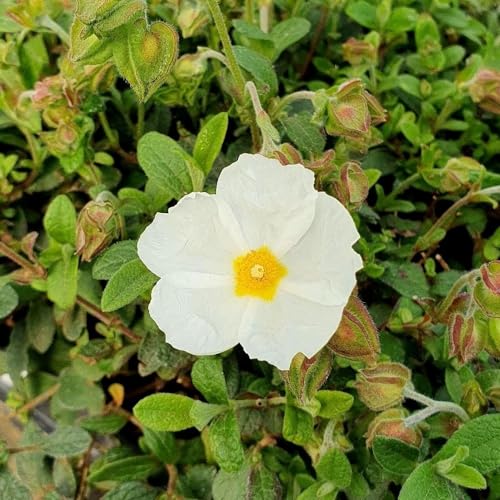How to grow rock roses – bring the Mediterranean home with these drought-tolerant plants
A complete guide to growing these resilient plants

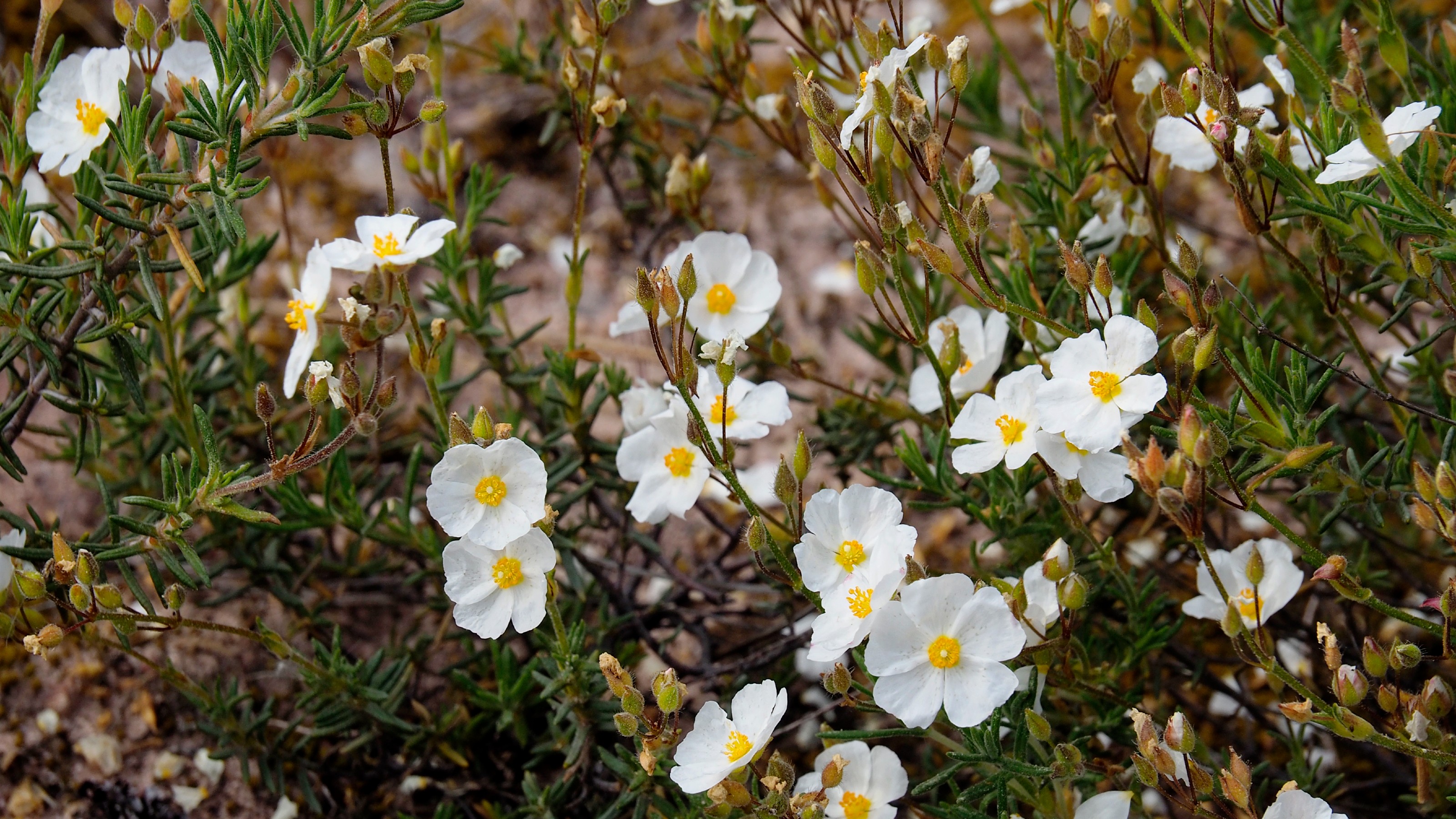
The summer weather has finally returned, and it's got us thinking about plants which thrive in the heat. Knowing how to grow rock roses can add a touch of the Mediterranean to any garden – even those with the poorest soils.
Perfect for narrow garden border ideas, these evergreen shrubs boast vibrant papery flowers and can withstand the toughest growing conditions. They’re on our list of the best drought-tolerant plants for a reason.
‘Rock roses, or Cistus, are an excellent choice for gardeners seeking resilient and attractive flowering shrubs,’ says Tim Marshall, head gardener at Raby Castle.
If you’re wondering how to grow rock roses, we’ve put together a step-by-step guide to getting the most out of these shrubs.

Tim Marshall, Raby Castle’s head gardener, has had a career which spans nearly three decades and has taken him all over the world. Now working across County Durham’s Raby Estates, Tim is leading the transformation of the walled garden and the grounds to the north of the castle in the project known as The Rising.
What you will need
- Rock rose plant
- A trowel like the Spear & Jackson Elements Hand Trowel from Amazon
- Secateurs like the Kent & Stowe Garden Cutting Carbon Steel & Red Bypass Secateurs from B&Q
- Mulch like Strulch from Amazon
Where to buy rock roses
Rock roses are available in a wide range of colours, from plainer varieties to those which feature a darker blotch on the petals. They're usually sold in pots and can be planted straight into the garden.
Here are some of our favourites:
Step-by-step guide
1. Deciding where to plant rock roses
If you want to know how to grow rock roses successfully, you'll need to decide when and where to plant them first.
Sign up to our newsletter for style inspiration, real homes, project and garden advice and shopping know-how
The best time to plant rock roses is during the spring, when temperatures are mild. ‘The warmth and moisture helps the roots spread and grow stronger,’ explains Andy Ellis, former professional gardener and founder of Posh.co.uk. ‘It also means the plant has plenty of time to settle and establish itself before the cold winter months.’
Rock roses are among the best shrubs for full sun, so choose a location that receives a lot of direct sunlight – at least six hours every day, according to Tim from Raby Castle. Rock roses are the perfect choice if you're looking to fill gaps in the garden with poor soil quality. 'They prefer well-drained soil and can tolerate poor, rocky, or sandy soils – hence their name,' says Tim.
We love how versatile this shrub is. ‘Ideal for xeriscaping, they are excellent for coastal gardens, slopes, and rocky areas where soil drainage is good,' Tim adds.

Andy Ellis is a former professional gardener turned interior designer and the founder of Posh.co.uk, home to an array of garden supplies and bathroom fittings. In his spare time, he can be found tending to his plants and continuing to work to make his garden the envy of the neighbourhood (he succeeded).
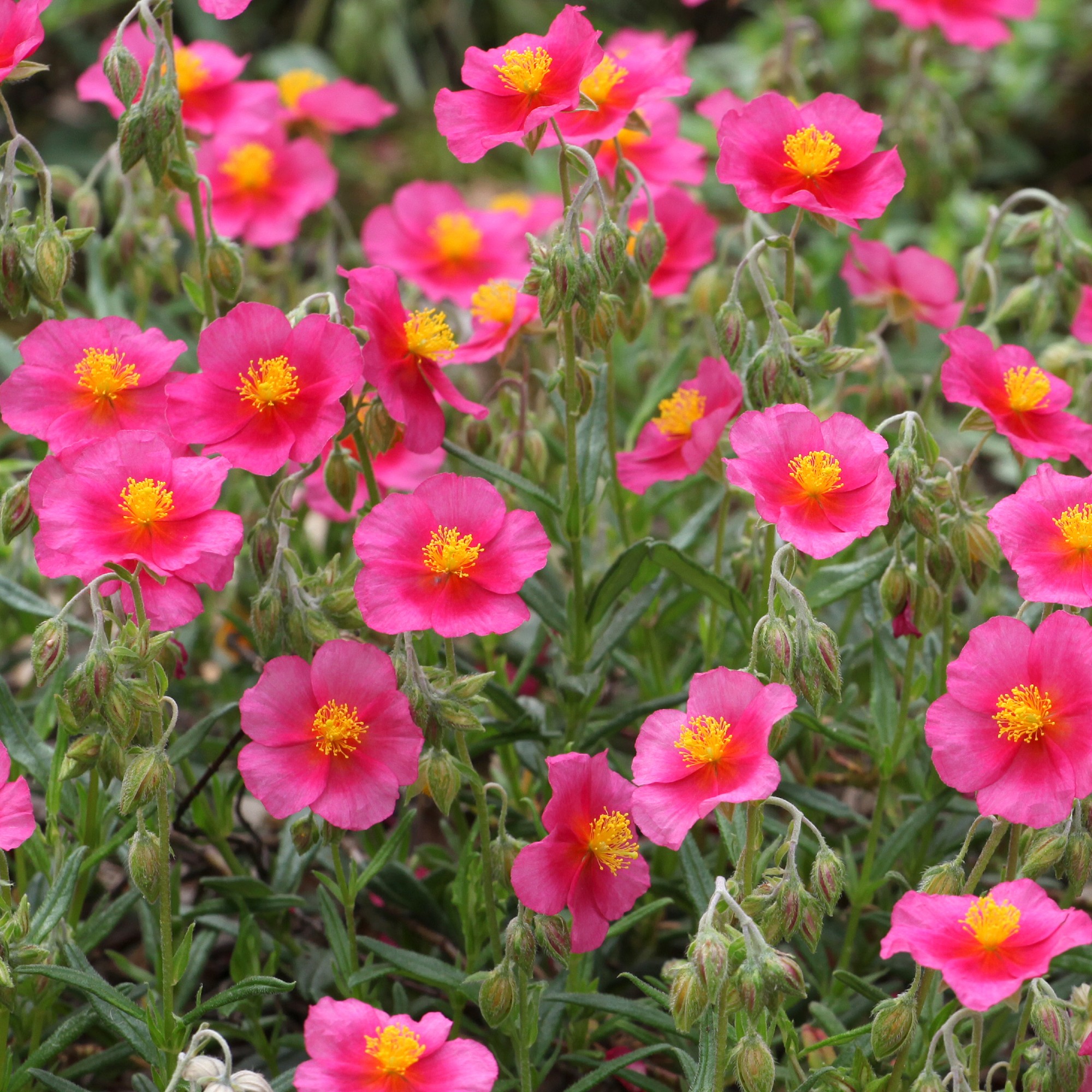
It's also best to avoid exposed or chilly locations.
Claire Margetts is head gardener of the National Trust's Mottistone Manor where rock roses are a notable feature of the coastal, Mediterranean-style garden.
'Rock roses are mostly hardy in the UK, but avoid very cold or windy sites,' Claire advises. 'In colder parts of the country, consider the hardier species Cistuslaurifolius, C. × hybridus and C. × cyprius and their cultivars.'
2. Planting rock roses
Now that you've decided on the location, you can start planting your rock rose.
'Dig a hole twice the width of the root ball,' says Tim from Raby Castle. 'Place the plant in the hole, backfill with soil, and water thoroughly. Mulching around the base of the shrub can help retain moisture and reduce weeds.'
3. Watering
Rock roses need plenty of watering until they are established, after which they become mature, drought-tolerant plants. 'After this point, reduce watering to an occasional deep soak,' advises Tim.

4. Pruning
Rock roses only require light trimming to keep them in shape and encourage healthy growth.
'The best time to do this is in the late spring or early summer after flowering,' says Andy. 'You must avoid heavy pruning once the plant matures, as this can actually damage and kill it. Even the old and woody parts need to be removed in the early spring to give the plant the chance to heal properly.'
It's also a good idea to plan ahead if you want to keep rock roses in your garden for years to come. 'Rock roses aren’t particularly long-lived, flowering for up to 10 years, so it’s worth taking cuttings or sowing seeds to have backup for harsh winters or just to increase your plant stock,' says Claire from Mottistone Manor.
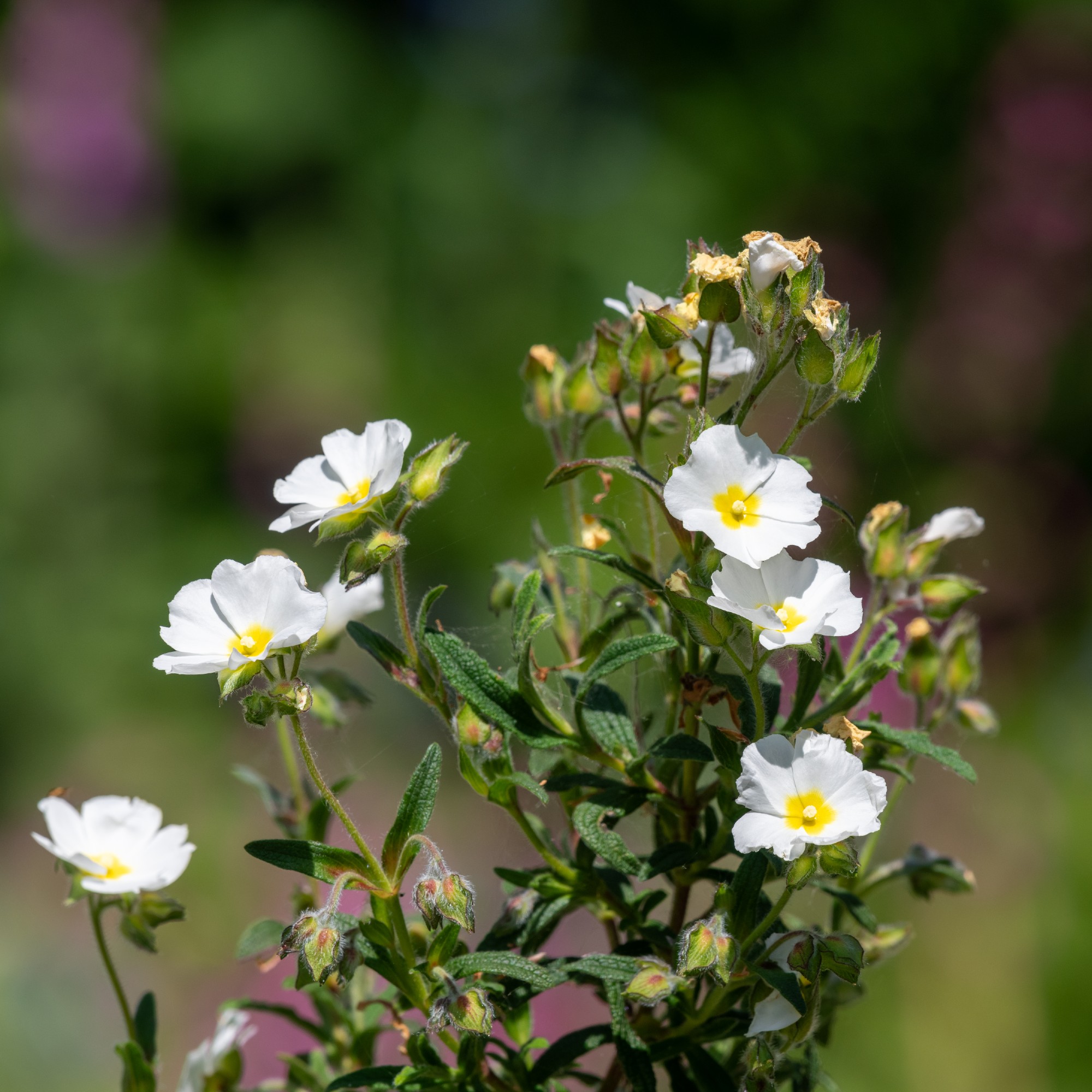
FAQs
Are rock roses fast growing?
'Yes, rock roses are very fast-growing plants, and they reach maturity within a couple of seasons,' says Andy. 'This is why they are fantastic for filling empty spaces in the garden and also why they can benefit from some very light pruning when the plant is very young.'
Is rock rose a perennial?
Rock roses are perennials, providing summery displays year after year if cared for properly.
'They can live for several years, providing a long-term solution for sunny, well-drained garden spots,' says Tim from Raby Castle. 'Regular light pruning and minimal care ensure their longevity and continued blooming.'
Should you deadhead rock roses?
Rock roses are prolific bloomers, but should you deadhead them?
'Unless particularly unsightly, there is no need to deadhead as the plant will constantly renew its dead flowers,' says Claire from Mottistone Manor. 'To deadhead, use the pinch and pull method.'
So, now that you know how to grow rock roses, you can start designing your Mediterranean-style borders!

Sophie joined the Ideal Home team as Gardens Editor in June 2024. After studying English at Royal Holloway, University of London, she began writing for Grow Your Own, which spurred on her love of gardening. She's tried growing almost every vegetable under the sun, and has a soft spot for roses and dinnerplate dahlias.
As Gardens Editor, Sophie's always on the lookout for the latest garden trend. She loves sharing growing hacks for every space, from herbaceous borders to balconies.

